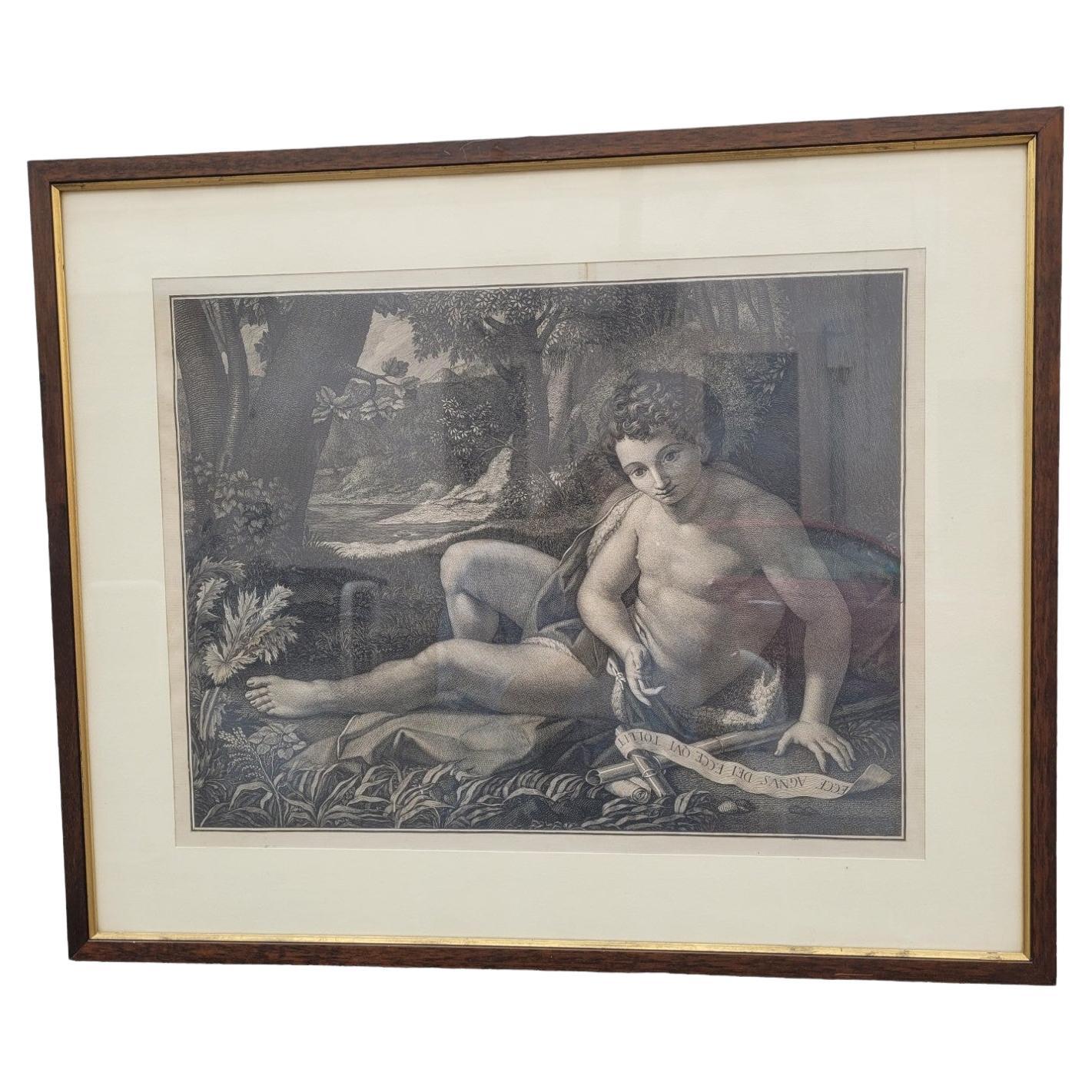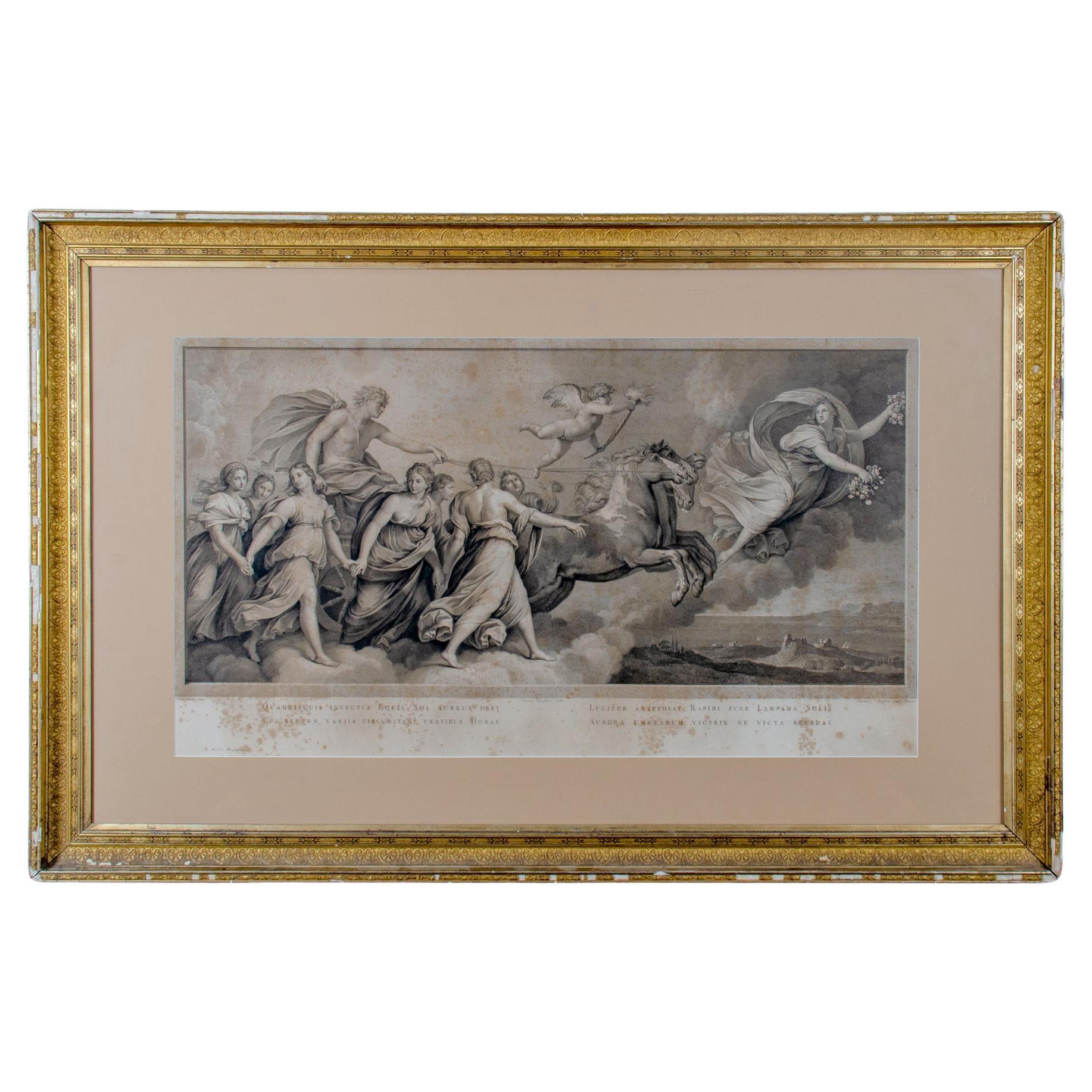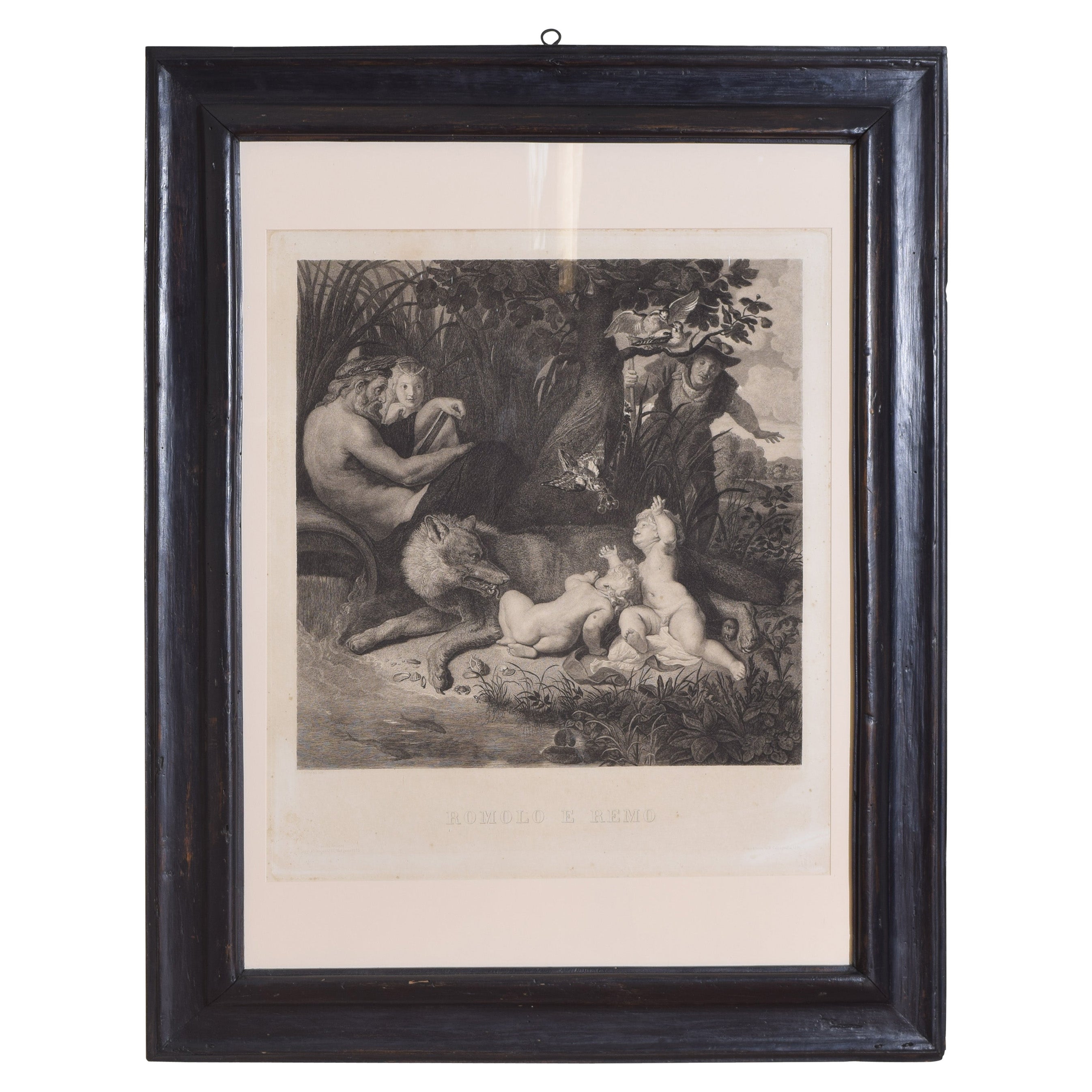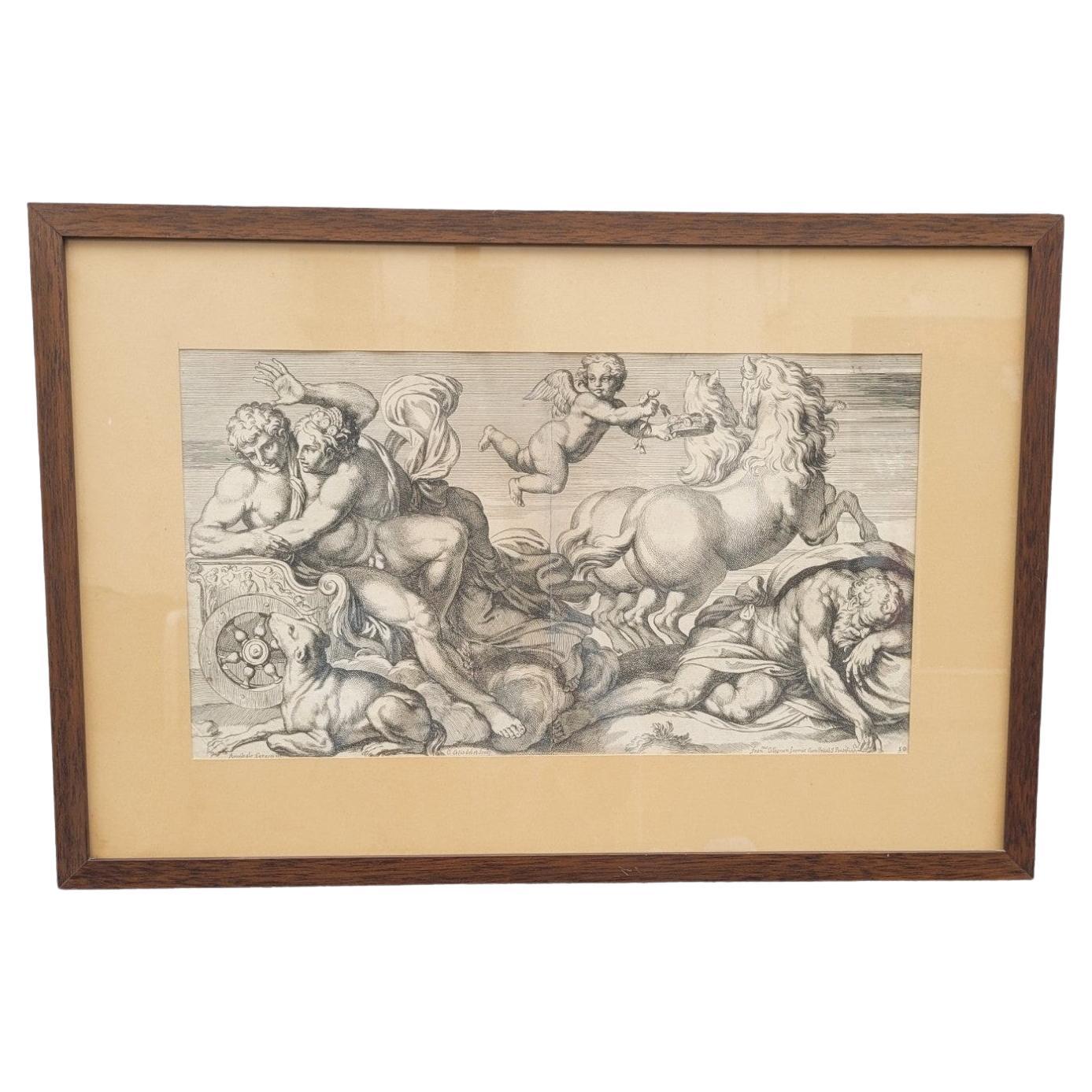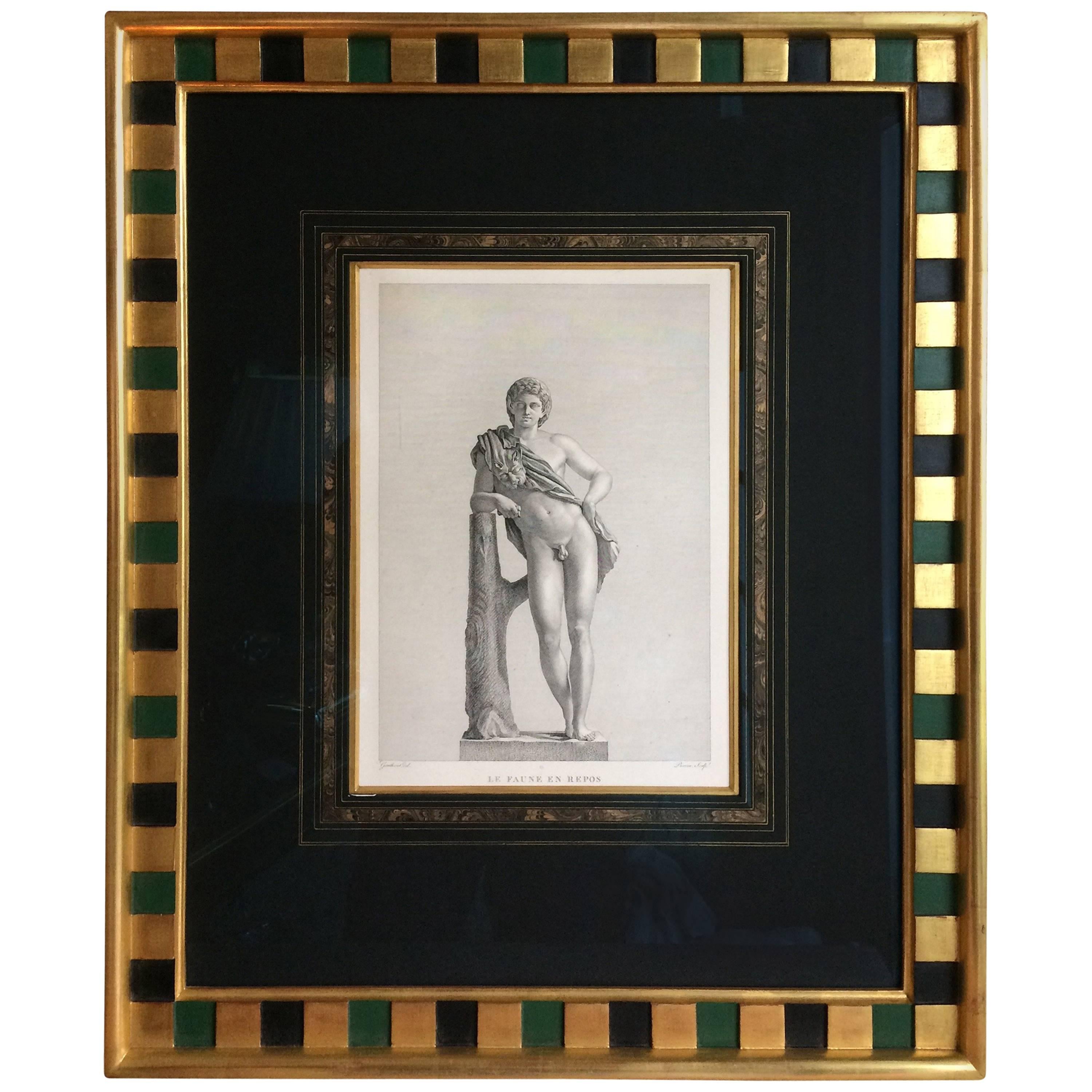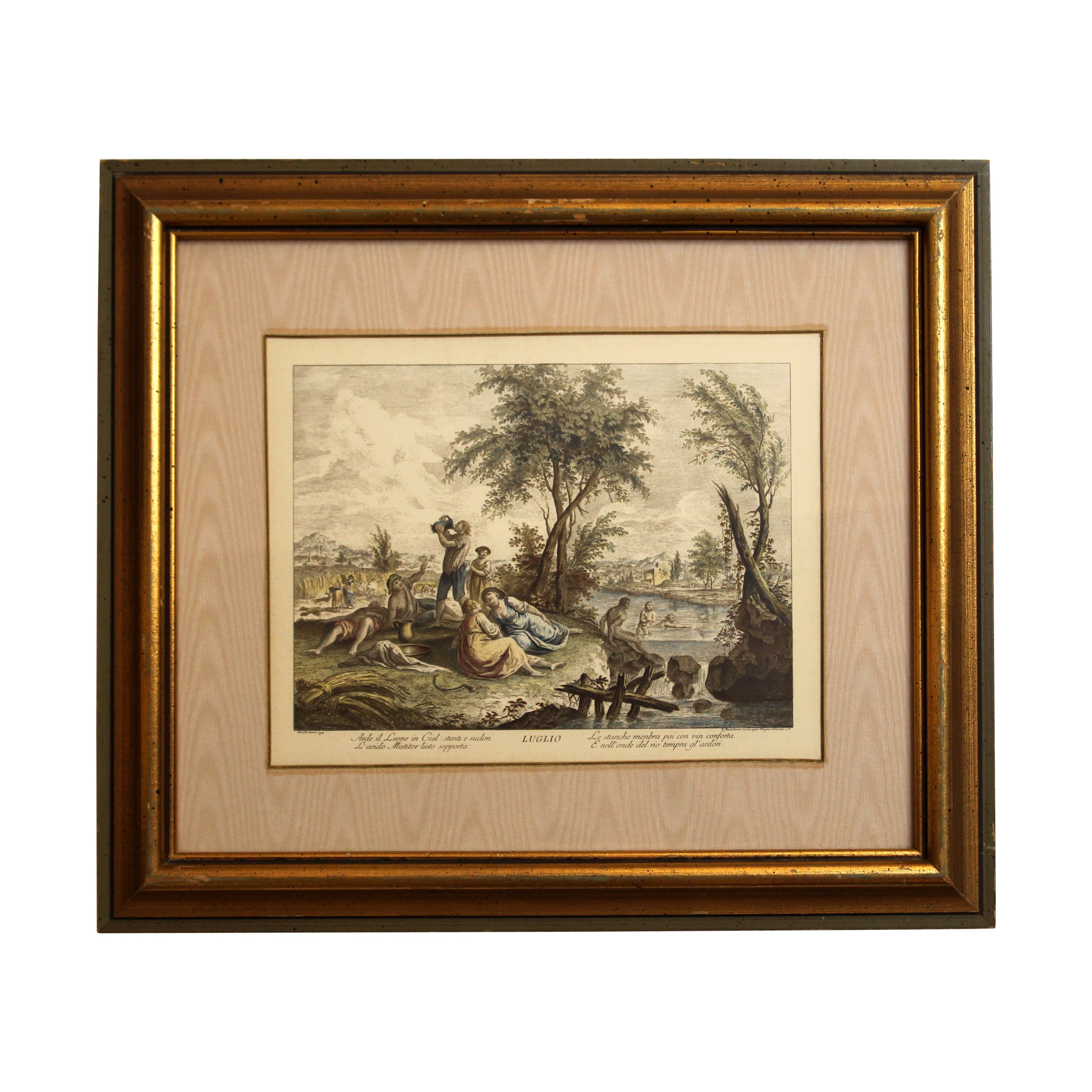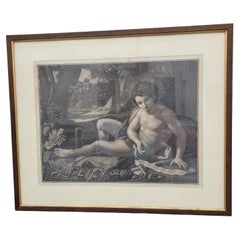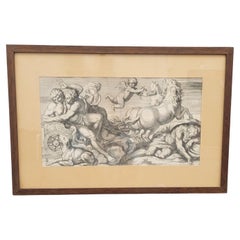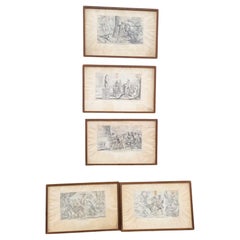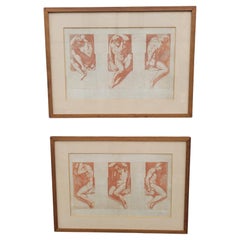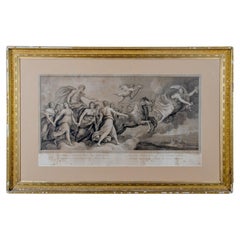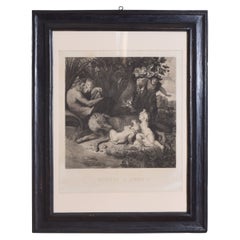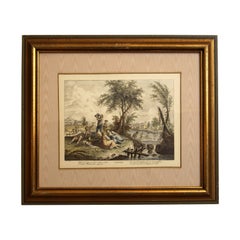Items Similar to G Longhi, Il Genio De La Musica - Cupido, Framed Engraving, 19th Century
Want more images or videos?
Request additional images or videos from the seller
1 of 19
G Longhi, Il Genio De La Musica - Cupido, Framed Engraving, 19th Century
$886.09
£664.18
€750
CA$1,217.34
A$1,359.04
CHF 712.12
MX$16,636
NOK 9,043.90
SEK 8,527.25
DKK 5,709.27
Shipping
Retrieving quote...The 1stDibs Promise:
Authenticity Guarantee,
Money-Back Guarantee,
24-Hour Cancellation
About the Item
"il genio de la musica vince per fin Cupido" / the Genius of Music triumphant over Love, based on a 17th century work by Guido Reni, kept at the Palazzo Spinola in Genoa.
This framed engraving represents the genius of Music burning Cupid's arrows, tied to a tree, blindfolded.
Mentions: "Non semper il caso avverasi, ma tal lo pinso Guido", "Guido Reni Pinx" (the painter) and "Joseph Longhi sc 1794" (the engraver)
Giuseppe Longhi is an Italian painter and engraver (1766-1831): following his serious studies, he achieved real technical mastery (etching, chisel and dry point, on the same plate) and was rewarded with prizes awarded by Italian municipalities. Best engraver of his time, in 1796 he became Napoleon's official engraver in Italy: he executed the portrait of Napoleon painted by Gros to commemorate the Battle of Arcole, met Napoleon Bonaparte and obtained the Chair of Engraving in Milan, then in 1806 , a portrait of Napoleon for the Italian civil code
Guido Reni (1575-1642) is a painter from Bologna; He mainly paints religious works, but also mythological and allegorical subjects. Active in Rome, Naples but also in Bologna, he is the dominant figure of the School of Bologna, which emerged under the influence of the Carracci family (school of painting founded in 1582, bearing the name of Accademia dei desiderosi ("Accademia dei desiderosi") of those who wish")
Traces of exposure to the sun, foxing stains
Dimensions with frame: 68 x 54cm
Dimensions without frame: 48.5 x 37cm
- Creator:Guido Reni (Artist)
- Dimensions:Height: 21.26 in (54 cm)Width: 26.78 in (68 cm)Depth: 0.6 in (1.5 cm)
- Style:Empire (In the Style Of)
- Materials and Techniques:
- Place of Origin:
- Period:
- Date of Manufacture:unknown
- Condition:Wear consistent with age and use. Minor losses. Minor structural damages. Minor fading.
- Seller Location:MARSEILLE, FR
- Reference Number:1stDibs: LU6656240627812
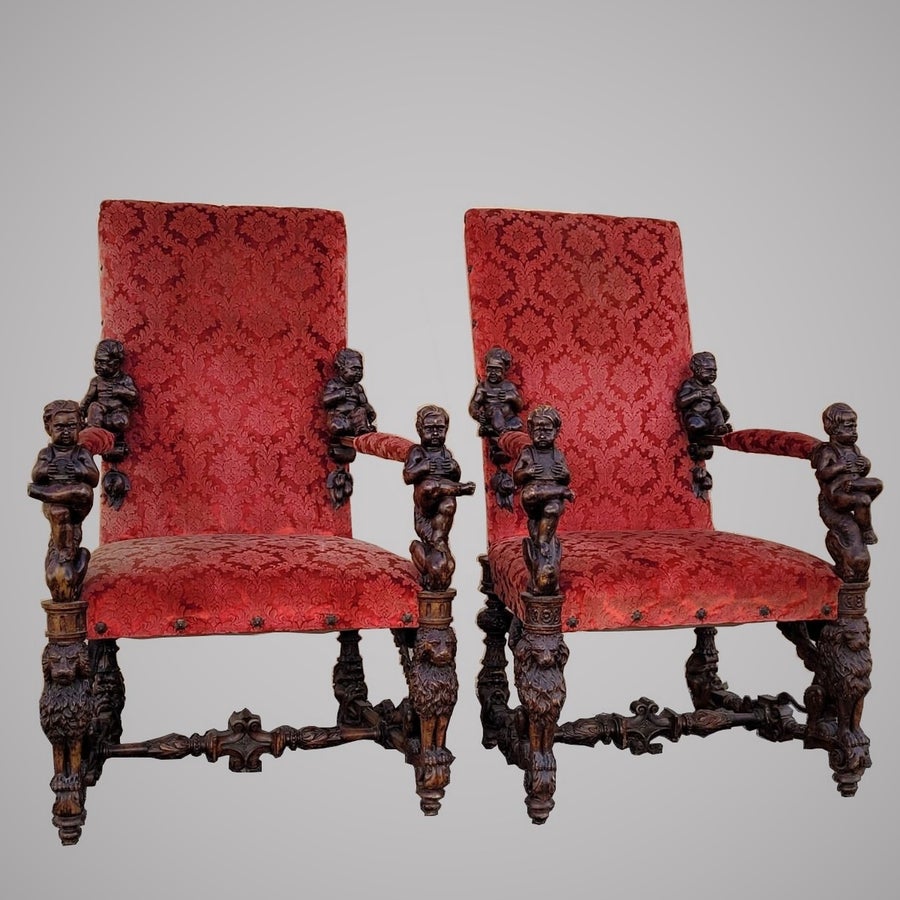
About the Seller
5.0
Gold Seller
Premium sellers maintaining a 4.3+ rating and 24-hour response times
Established in 1999
1stDibs seller since 2022
24 sales on 1stDibs
Typical response time: 8 hours
- ShippingRetrieving quote...Shipping from: MARSEILLE, France
- Return Policy
Authenticity Guarantee
In the unlikely event there’s an issue with an item’s authenticity, contact us within 1 year for a full refund. DetailsMoney-Back Guarantee
If your item is not as described, is damaged in transit, or does not arrive, contact us within 7 days for a full refund. Details24-Hour Cancellation
You have a 24-hour grace period in which to reconsider your purchase, with no questions asked.Vetted Professional Sellers
Our world-class sellers must adhere to strict standards for service and quality, maintaining the integrity of our listings.Price-Match Guarantee
If you find that a seller listed the same item for a lower price elsewhere, we’ll match it.Trusted Global Delivery
Our best-in-class carrier network provides specialized shipping options worldwide, including custom delivery.More From This Seller
View AllJohn The Baptist, Framed Engraving, 19th Century
Located in MARSEILLE, FR
John the Baptist, framed engraving representing John as a young shepherd dressed in a melote, seated next to his cruciform reed staff and the banner "Ecce agnus dei ecce qui tollit.....
Category
Antique 19th Century French Empire Prints
Materials
Paper
Aurora And Cephale, Framed Engraving, Carracci, 17th Century?
By Annibale Carracci
Located in MARSEILLE, FR
The framed engraving of "Aurore and Cephalus" depicts the kidnapping of Prince Cephalus by Aurore, who has fallen madly in love with him.
This work was created by Annibale Carracci ...
Category
Antique 17th Century Italian Baroque Prints
Materials
Paper
Aeneid After Mitelli And Caracci, Framed Engravings, 18th Century
By Giuseppe Maria Mitelli
Located in MARSEILLE, FR
Suite of 5 framed engravings recounting episodes from the Aeneid, journey of the hero Aeneas after the fall of Troy, according to Virgil
* "Ecce trahunt manibus victum post terga si...
Category
Antique 18th Century Italian Greco Roman Prints
Materials
Paper
After Carracci, Atlantes from the Farnese Palace, 2 Engravings, 17th Century ?
By Annibale Carracci
Located in MARSEILLE, FR
This pair of engravings is made in the sanguine style, using red chalk. They represent the preparatory work for the Atlanteans of the Farnese Gallery in Rome, according to Carracci. ...
Category
Antique 17th Century French Renaissance Prints
Materials
Paper
Saint Matthew And The Angel, Engraving After Le Guercin, 18th Century
By Giovanni Francesco Barbieri (Il Guercino)
Located in MARSEILLE, FR
This framed engraving, made in the red chalk style, represents the apostle Matthew writing his Gospel under the dictation of the angel. The angel is Matthew's symbol, because his Gospel begins with the human genealogy of Jesus, with the story of Joseph who also receives a visit from an angel announcing to him that Mary's unborn child was fathered by the Holy Spirit.
The engraving was made after the Guercin "Guercino inv" and also bears the words "F Bartolozzi...
Category
Antique Late 18th Century Italian Baroque Prints
Materials
Paper
After Carracci, Atlantes from the Farnese Palace, 2 Engravings, 17th Century ?
By Annibale Carracci
Located in MARSEILLE, FR
These engravings, imitating the red chalk technique, represent the preparatory work for the Atlantes in the Farnese Gallery in Rome, according to Carracci. There we find the mentions...
Category
Antique 17th Century French Renaissance Prints
Materials
Paper
You May Also Like
Aurora Engraving after Guido Reni Fresco by R.S. Morghen, c.1787
Located in Savannah, GA
Raffaello Sanzio Morghen
(Italian, 1758-1833)
Apollo in his Chariot preceded by Aurora, engraving after Guido Reni, c.1787. A rare original engraving with most examples being housed in museum collections.
Apollo on his chariot bringing light to Aurora, surrounded by maidens or the Hours. Phosphorus in putto form personifying the morning star holds a torch lighting...
Category
Antique Late 18th Century Italian Classical Roman Prints
Materials
Paper
Italian Large Engraving of Romulus & Remus, Ebonized Frame, 2nd Half 19th Cen
Located in Atlanta, GA
In Roman mythology, Romulus and Remus are twin brothers whose story tells of the events that led to the founding of the city of Rome and the Roman Kingdom by Romulus, following his f...
Category
Antique 19th Century Italian Prints
Materials
Paper
Very Handsome, Framed Engraving of Cupid
Located in Palm Beach, FL
Daughter of a King, Psyche was wooed anonymously by cupid at the behest of his mother, Venus, who was jealous of her beauty. When Psyche discovered who her lover was, cupid fled. But having fallen in love, they reunited after many hardships, and Psyche was made a goddess.
Musee de Louvre...
Category
Antique Mid-19th Century European Classical Greek Paintings
Materials
Paper
Early 19th Century Engraving "Luglio" from The Months by Giuseppe Zocchi
By Francesco Bartolozzi
Located in Chapel Hill, NC
Early 19th century engraving "Luglio" from The Months by Giuseppe Zocchi, Italian. Engraved by Francesco Bartolozzi, Italian, 1727-1815. Zocchi, 1711-1767. Hand colored. A celebratio...
Category
Antique Early 19th Century Italian Romantic Prints
Materials
Paper
Giovanni Benedetto Castiglione, 1609-1664, Young Man, Etching Circa 1640
By Giovanni Benedetto Castiglione
Located in Toronto, CA
This is an original etching by Giovanni Benedetto Castiglione, circa 1640, of a Young Man Looking Down to the Right. It is the only known state and belongs to the series known as 'Studies of Heads in Oriental Headdress'. Signed (in monogram) in the plate in the upper right 'G Castiglione Genovese.'
In a delicate gilt/black frame. Frame dimensions 12.75" by 8.75". Certificate of Authenticity.
In this work, Castiglione offers us an exquisite portrait of a young man. This small etching shows all the hallmarks of Castiglione's style: incredibly detailed etching marks that result in a wonderful play of light and shadow. The angle of the head and the lively floating feather in the young man's hat show us a figure in movement, pausing to look at something the viewer can only guess at. That such a small collection lines and cross-hatchings can evoke so much is a testament to Castiglione's genius.
Giovanni Benedetto Castiglione was an Italian Baroque painter, printmaker and draftsman of the Genoese school. He is best known now for his etchings, and as the inventor of the printmaking technique of monotyping. He was known as Il Grechetto in Italy and in France as Le Benédette.
Castiglione was a brilliant draftsman and pioneered the development of the oil sketch (often using a mixture of mediums) as a finished work.
He is credited with having invented the monotype in 1648, the only printmaking technique to be an Italian invention, making over twenty over the succeeding years. His most popular and influential prints were a series of exotic heads, mostly of vaguely Oriental males, but also of women.
From Bartch/Bellini:
Giovanni Benedetto Castiglione was profoundly influenced by foreigners. He first studied with local artists in his native Genoa, absorbing not only Tuscan Mannerism and Caravaggism but also the style of Peter Paul Rubens, who had worked in Genoa. From 1621, Castiglione also worked in Anthony van Dyck's Genoa studio. Early on, he was attracted to Flemish animal painting. Though he painted portraits, historical pieces and landscapes, Castiglione excelled in rural scenes with animals and influenced Italy's animal painting specialists. By 1634, Castiglione was in Rome, where he remained for about ten years. After returning to Genoa for a time, he worked for the Mantuan court in 1648, which had also employed Rubens. There Castiglione picked up the freedom of touch he saw in Domenico Fetti's paintings. One of the first Italians to appreciate Rembrandt van...
Category
Antique 17th Century Italian Baroque Prints
Materials
Paper
1819 Ink Drawing After Poussin
By Nicolas Poussin
Located in 263-0031, JP
An ink drawing after Poussin. Dated 1819 on bottom right. The frame and glass color are original.
Category
Antique 1810s French Restauration Drawings
Materials
Canvas
$2,000 Sale Price
20% Off
More Ways To Browse
Napoleon Portrait Plate
Wood Giraffe Sculpture
Wwi Memorabilia
18th Century Antique Chinese Cup Saucer
1800 Antique Secretary Desk
18th Century Bohemian Glass
1920s Mantle
1970 Record Cabinet
19th Century Bronze Stag
19th Century Carved Hutch
19th Century Chinese Bronze Urns
20th Century Terracotta Plates
70s Pillows
8 Foot Mirror
African Sculpture Antelope
African Wood Bed
Alfredo Barbini Fish
American Of Martinsville Chest Of Drawers
